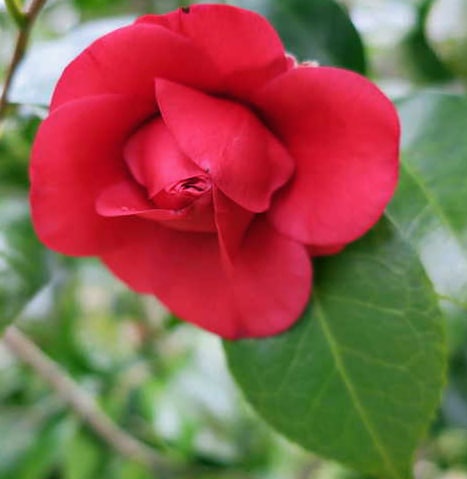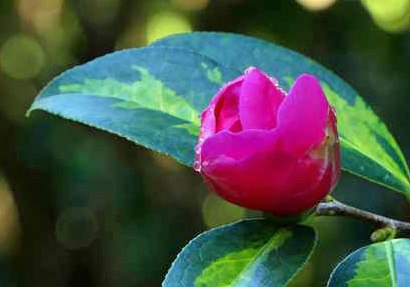Lee Anderson – Master Gardener

The Camellia has a rich history just beginning with how it traveled to America from the Orient and Europe. The Camellia “Sinensis” was used for tea long before its blooms were used for adornment. Camellias were not popular as “cut flowers,” in Japan because they were associated with “beheading.” So no blooms were ever cut from the shrubs/trees for some time. There are about 250 species of Camellias. They produce on their own and do not need a second Camellia to act as a pollinizer.
If you have Camellias you know that they are long-lived trees and shrubs. The leaves are glossy-green foliage year-round and the blooms are cool season flowers. Their roots are shallow, so avoid planting under shade trees such as Maple or Birch. You can grow smaller varieties in pots and Camellias also make wonderful Bonsai and Espalier. They like the acidic soil just as the azalea and Rhododendron.

The most common “around here” at the nurseries is the Sasanqua and the Japonica. The differences are: Sasanqua has smaller leaves, blooms are shallow, make great hedges, petals drop, blooms from fall to winter. The Japonica has larger leaves, blooms are fuller, whole bloom falls off, and they bloom from beginning of winter to spring. Both have serrated leaves. Colors include from white to various shades of pink and reds. Some have a peppermint look, with white and pink. Plant them while they are blooming and at their most dormant stage. This way they should only suffer minimal stress. They are slow-growing.
Butterflies, bees and birds are attracted to the fall and winter buffet of nectars. Sadly, most Camellias do not have a fragrance….but there are a few, and work is being conducted to add scents. Camellias are fairly hardy and minimal care – feeding, pruning, if you want to control size. If you want color in the winter, this is the shrub to choose. Cuttings of these gorgeous blooms will brighten any room and I promise—no beheading!

